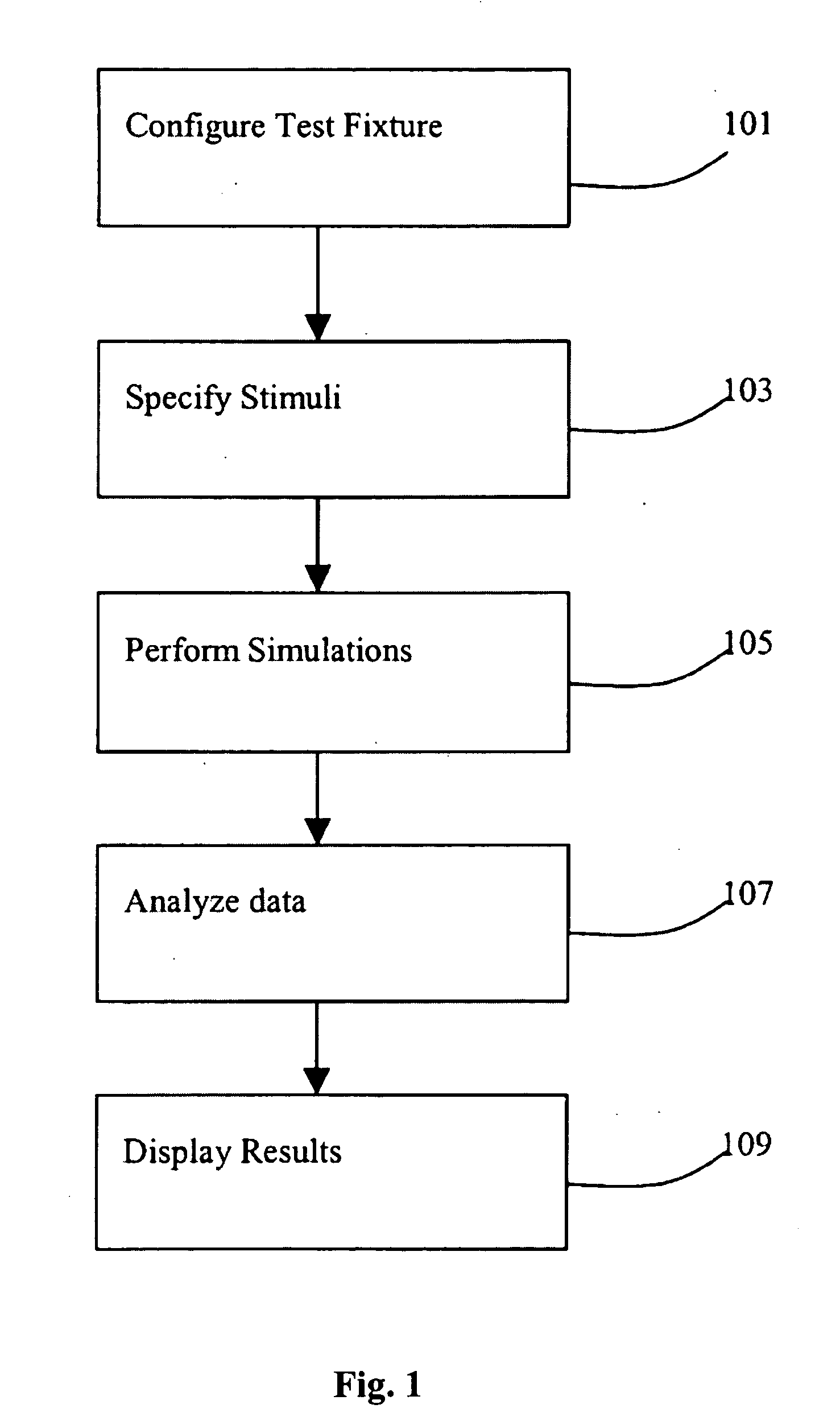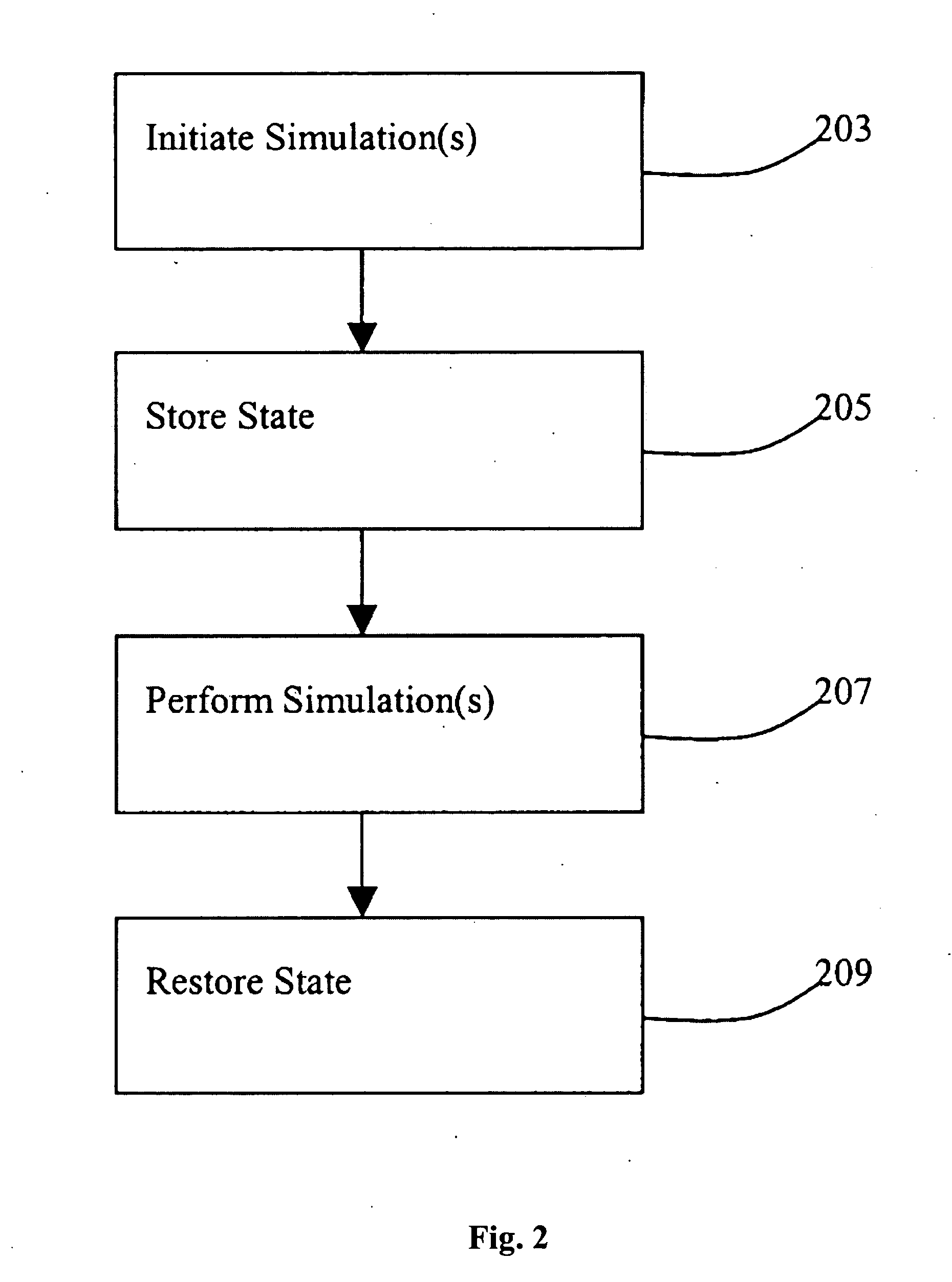Method and system for implementing, controlling, and interfacing with circuit simulators
a circuit simulator and simulator technology, applied in the field of method and system for implementing, controlling, and interfacing with circuit simulators, can solve the problems speeding up the simulation process, and many designers do not feel justified, and achieve the effect of wasting designer's tim
- Summary
- Abstract
- Description
- Claims
- Application Information
AI Technical Summary
Benefits of technology
Problems solved by technology
Method used
Image
Examples
Embodiment Construction
[0315] probe out=V(p,n)
[0316] The following measurement demonstrates one way in which probe functions are use within a measurement.
26 measurement cp --- "Measures 1 dB compression point" { input inst src=Pin from {port} --- "Input source" input inst load=Rout from {port, resistor} --- "Output load" input real start=-10_dBm --- "Initial input power level" input real stop=10_dBm from (start..) --- "Final input power level" input real fund=1GHz --- "Fundamental frequency" output point cp ---"Compression point" export signal Pout --- "Output power versus input power" src:type = `sine src:freq = fund foreach src:dbm from swp(start=start, stop=stop) { run pss( fund=fund ) real Vfund = V(load)[1] Pout=dBm(Vfund**2 / (2*load:r) "W") } cp=compression_point(Pout,1) }
[0317] This measurement computes the output power. Notice that the user defines the output of the circuit by passing in the load component, load. This gives at least two ways to compute the power. One could use either:
[0318] pwr=V(l...
PUM
 Login to View More
Login to View More Abstract
Description
Claims
Application Information
 Login to View More
Login to View More - R&D
- Intellectual Property
- Life Sciences
- Materials
- Tech Scout
- Unparalleled Data Quality
- Higher Quality Content
- 60% Fewer Hallucinations
Browse by: Latest US Patents, China's latest patents, Technical Efficacy Thesaurus, Application Domain, Technology Topic, Popular Technical Reports.
© 2025 PatSnap. All rights reserved.Legal|Privacy policy|Modern Slavery Act Transparency Statement|Sitemap|About US| Contact US: help@patsnap.com



